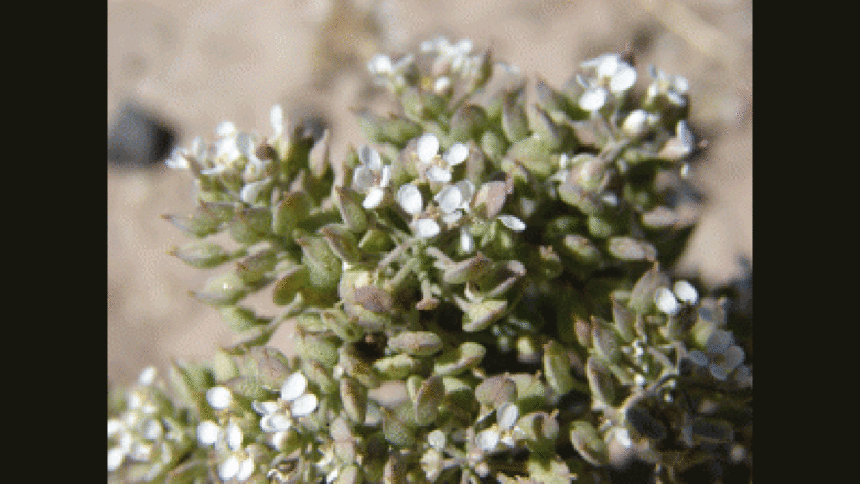Critical habitat proposed for rare southwestern Idaho plant

BOISE, Idaho (AP) - Environmental groups reacted with mixed responses Thursday to a Trump administration plan to create critical habitat for a small, flowering plant found only in southwestern Idaho that was listed as threatened under the Endangered Species Act in 2016.
The U.S. Fish and Wildlife Service on Thursday proposed protecting about 65 square miles for slickspot peppergrass. That's about 30 square miles less than the agency proposed in 2014. The proposed protected habitat is mostly on public land administered by the U.S. Bureau of Land Management.
The Western Watersheds Project blasted the decision as ignoring the problem posed by cattle grazing. But the Center for Biological Diversity, while lamenting the cut in critical habitat, said the plant was finally getting additional protection.
Slickspot peppergrass produces white flowers and can grow to 16 inches, though on average is 2 to 8 inches high. It is found only in eight southwestern Idaho counties, and only in the sagebrush steppe ecosystem.
It is called slickspot because it grows in slick spots that can be up to 10 feet in diameter, typically surrounded by sagebrush. These micro-habitats are hard and crusty when dry, but they have a greasy, clay surface when wet.
The plant was originally listed in 2009. But then-Gov. C.L. "Butch" Otter filed a lawsuit challenging the listing that could have ramifications for cattle grazing on public land. Western Watersheds Project and Advocates for the West filed a series of lawsuits and ultimately prevailed, and the plant was listed again in 2016.
Western Watersheds Project on Thursday criticized the Trump administration's cut to critical habitat. It said the administration's revised changes to the Endangered Species Act prevented the inclusion of areas occupied by slickspot peppergrass and ignored cattle grazing as causing the plant's demise.
"It's a surgical strike against slickspot peppergrass, reducing the critical habitat only to places where the species already occurs rather than giving it room to recover," Talasi Brooks, staff attorney with Western Watersheds Project, said in a statement. "But the reality is, unless they start taking livestock grazing seriously as a threat to the species, it doesn't matter what they claim to protect because they are allowing the most serious threat to continue unchecked."
The Center for Biological Diversity has also filed lawsuits. In October the center entered into an agreement with the U.S. Fish and Wildlife Service to finalize new critical habitat for slickspot peppergrass this summer.
"More acres should have been included, but we're happy to see the slickspot peppergrass finally getting the additional protection it needs," Andrea Zaccardi, senior attorney with the Center for Biological Diversity, said in a sta tement. "This plant is struggling to survive, and we're hopeful the critical habitat designation will help put it on the path to recovery."
The group said the plant is found in only about 90 places, and most are degraded with few plants.
Marissa Morrison, spokeswoman for Gov. Brad Little, a rancher who was lieutenant governor when Otter was in office, didn't immediately respond to an email from The Associated Press.
The U.S. Fish and Wildlife Service is taking public comments on the proposed critical habitat designation through Sept. 21.
